
Robbie Phillips and Alex Moore have repeated Dave MacLeod's Longhope Direct (E10 7a) on St Johns Head, Hoy, Scotland. MacLeod made the first ascent of the 9-pitch route in 2011, which features a 65m pitch of French 8b climbing.
The huge sandstone cliff is about as close to big wall climbing as you can get in the UK and other than the exceptionally hard climbing, there is soft, loose rock, huge run outs, and of course, Fulmars to deal with. The route had only been repeated once by James McHaffie and Ben Bransby back in 2013.
St John's Head Original Route (E3 6a) and Longhope Route (E7 6c) were climbed in 1969 and 1970 as multi-day undertakings. Ed Drummond spent seven days climbing the Longhope Route using a mixture of free climbing and aid. It remained unrepeated for 27 years until John Arran and Dave Turnbull repeated it free over four days, creating a stunning E7 6c. They avoided the final aid section on the headwall which is now the crux pitch of Longhope Direct (E10 7a).
Robbie first attempted the route in 2021 with Emma Twyford and describes his naivety towards the pair's first venture:
'In my head, I thought (in a completely unegotistical way) that 400m of E5 climbing should be OK, then a 65m 8b trad pitch, I can do that. On paper that really doesn't seem that hard; on Alpine limestone or Yosemite granite I'd quickly climb something of this difficulty, but I was incredibly naive from a lack of sea cliff climbing experience as to the variety of challenges we would face on St John's Head.'
Robbie and Emma found that instead of the hard crux pitch at the top of the route, it was the climbing below that shut them down:
'Extremely poor rock quality and some squeaky bum moments slowed us down and drained us mentally. Then we had the local inhabitants to deal with: the Fulmar - a bird that spits putrid vomit at you if you come too close. As it happened June was peak nesting season, something we were unaware of at the time, and as a result, they were (quite rightly) a lot more aggressive. Then the final sting in the tail was the aggressive Scottish sun that ended our attempt. During this first attempt, I learned a lot more about climbing on Orkney sea cliffs and specifically what is required to climb the Longhope.
'You need to keep a cool head for the whole day when nearly everything your fingers grab wants to crumble to dust in your hands, or anything you stand on feels like it will explode under the pressure of your climbing shoe, or when standing up too fast might mean a face full of vomit! The gear is largely for confidence, because on many pitches a fall will mean hitting ledges, cutting ropes on huge corners, and it's certainly not something you want to test out. The crux of Longhope is getting to the final pitch fresh enough to do it, and having spoken to Dave Macleod, read Caff's blog, and experienced it myself, I don't think any of us were feeling fresh as a daisy when we arrived at the crux pitch.'
For this year's attempt, Robbie had to draft in a new climbing partner, preferably someone he hadn't asked before and ideally someone who 'gave off good vibes.' Alex Moore was just the man Robbie had been looking for:
'I've known Alex for years but we'd never climbed together before. I was sure we'd get along well… the big question would be if he could transfer his head for highballs and ballsy lakes trad onto the Orkney big walls!'
For Alex, it was a slight surprise to be asked on the trip via Instagram:
'The haphazardness of these arrangements probably speaks to people's reluctance to be involved in this kind of nonsense.'
There was little time to waste once the pair arrived on Hoy and on day 1 they were working the crux pitch. Any doubt that Robbie had over Alex's suitability for the task was quickly quashed when he took a 30m fall on a practice lead of the crux pitch, snapping two wires and landing near the belay:
'There were about 3 seconds where we stared at each other in total shock and for a moment I wondered, is it all over… then we both burst into uncontrollable laughter - this guy was gonna be fine!'
They spent the next week preparing for their ascent, leaving just after breakfast and never returning to the vans before 11pm. They got to grips with the lower pitches and practised the 'weird ones,' plus decided on the crucial questions like 'should we make a lightweight shield for the bird vomit in the "vice" pitch or should we make friends with the birds?'
After two days of rest, Robbie and Alex planned a final push, but the weather gods weren't looking happy and they were forced to go for it the very next day after their week of preparation.
They woke to rain at 4am on the day of their attempt and walked in with cold, wet feet:
'Spirits were low before we'd started descending, and they hit an all-time low when the ropes got stuck below on abseil and I had to go retrieve them, during which time I got covered in Fulmar vomit,' said Robbie.
They were climbing by 10am, which was two hours later than originally planned but they were moving fast, swinging leads the whole way.
'Gradually we began to enjoy it more and actually climbed really well I felt, making it to the good ledge for a lie down in good time,' Alex explained.
At the ledge (roughly 3/4 of the way up), they were able to compose themselves after the sustained fear and anxiety:
Robbie explained how the 'anxiety and stress eats into your reserves through the day. It's a common misconception that nerves get better as you climb for longer. Sure, on El Cap granite or bullet hard limestone they might, but not on sandy death choss!
'When climbing sustained bold climbing for hundreds of metres it takes a lot of mental energy to continue the fight… the effects of this are a feeling of being physically low on energy, less mental resilience to bold climbing, and even suddenly becoming overwhelmed by the exposure and not being able to continue (this has happened to me once).'
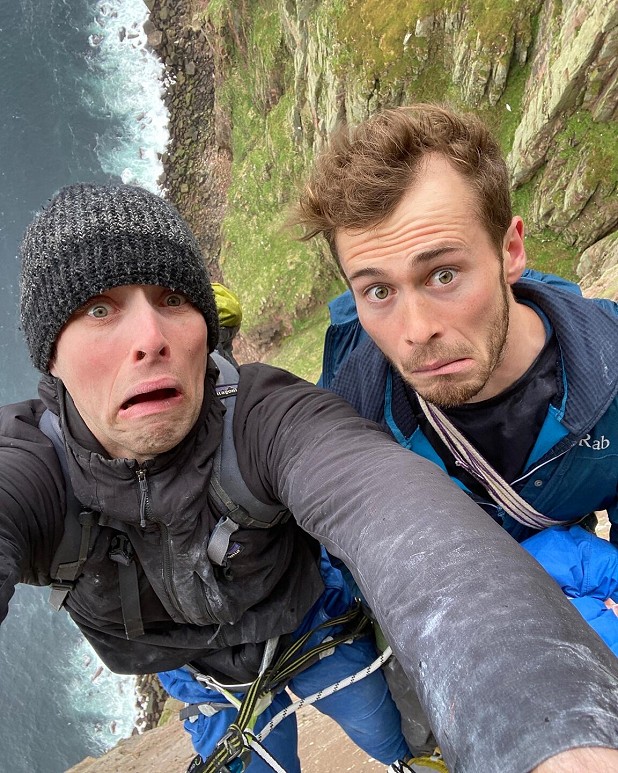
They pressed on and arrived at the 65m 8b crux pitch. It did not go easily for Robbie, who had to battle the entire way, feeling awful on the first difficult section which acted as a warm-up for the rest of the pitch:
'Crux 2 was not easy, but I scraped up it anyway. Crux 3 was the hardest and the main thing guarding the finish line. I focussed on leaving nothing on the wall as I had no reserves to make a single mistake. I don't really remember any moment of crux 3, it was all a blur, flow state I guess you'd call it? Grabbing the final jug, I screamed some obscenities in total shock of where I was!'
Robbie had been on the final pitch for some time and it was 9:45pm before he was heading back down the rope to meet Alex at the belay, not a formality in itself with some tricky rope work. It wasn't possible to strip the gear, so Alex decided to go for it regardless:
'I was more keen to do the route in a single push than to come back another day and place the gear,' said Alex. 'I went for it, taking my time at the rests but keeping a nervous eye on the setting sun. I topped out a little after 10:30, elated and exhausted. I would do it all again for the enjoyment we squeezed out of it, but frankly, I'm glad I don't have to.'
Watching Alex, Robbie was nervous: 'I knew he had it in him and he knew that too; he'd be disappointed with anything less than a clean lead! But I needn't have been nervous, he dispatched in great style, and ended one of the finest days of climbing I've ever had.'



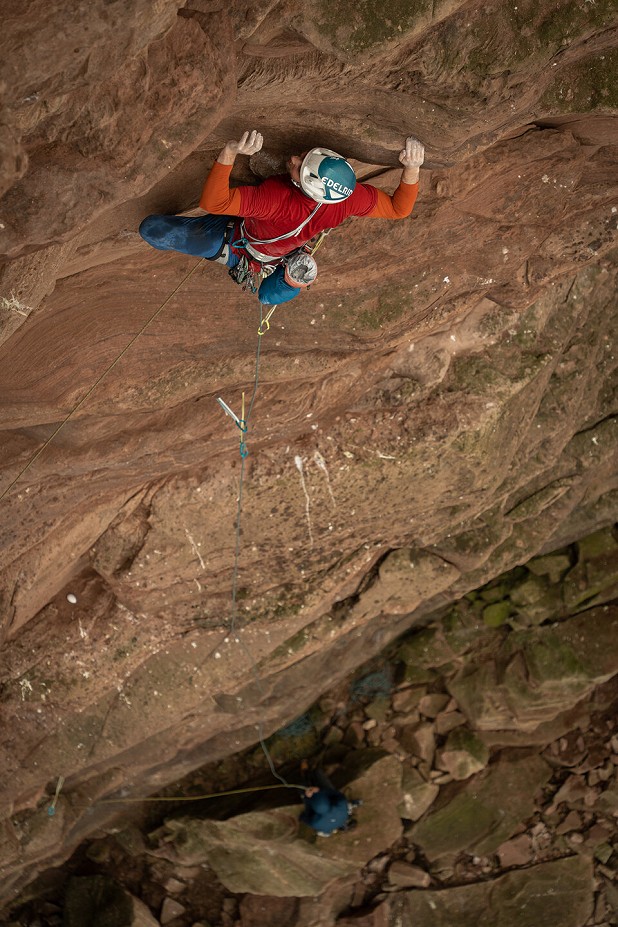

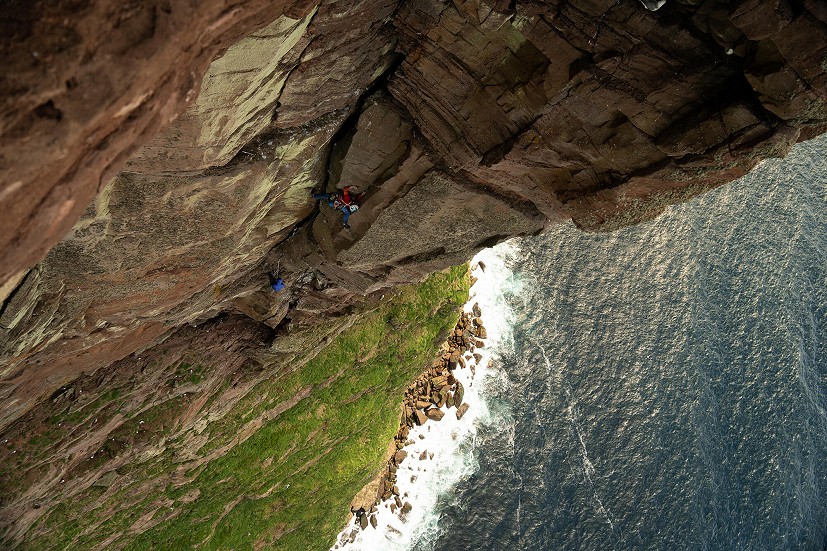
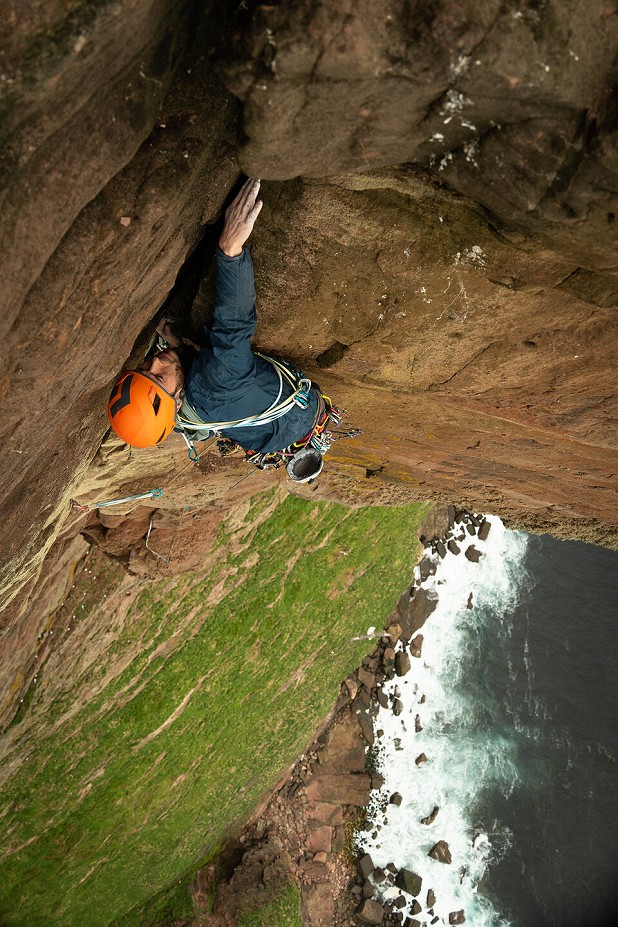

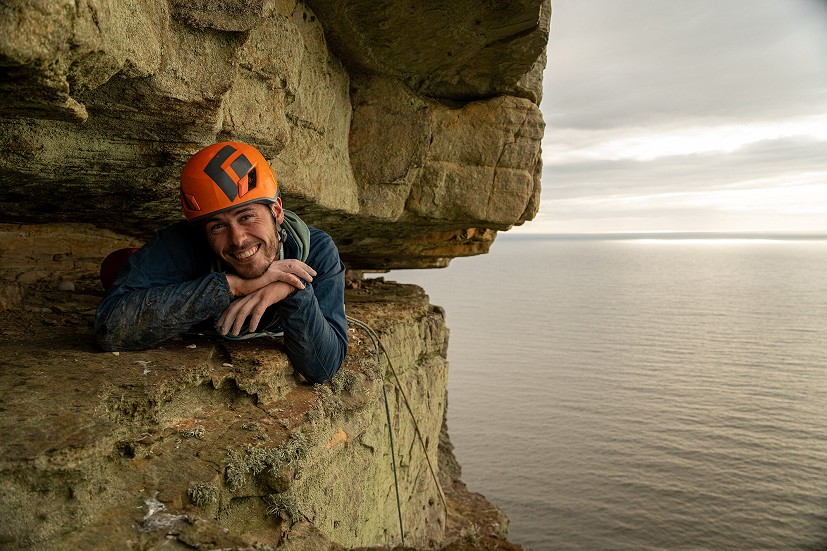








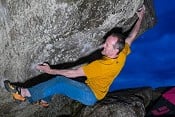
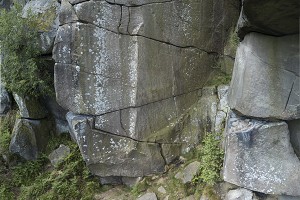
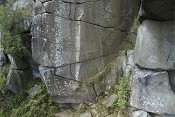
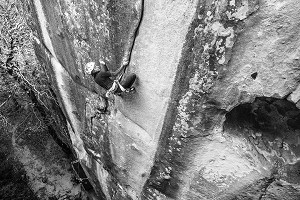




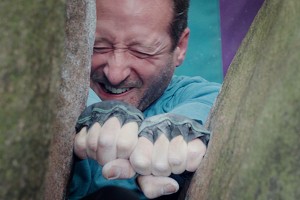
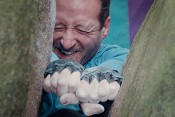
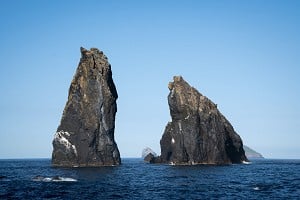
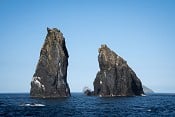
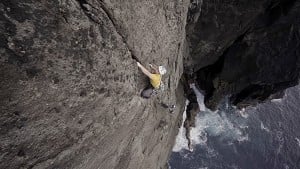

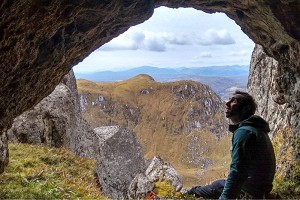
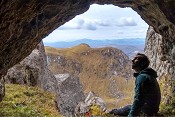
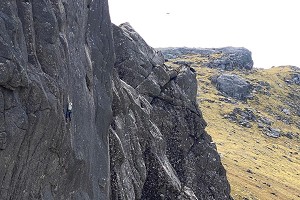

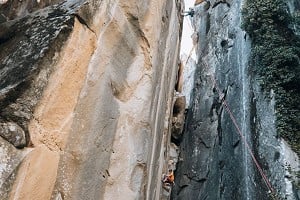
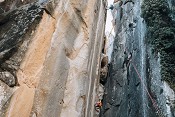
Comments
More of this sort of thing !
Looks (and sounds) both amazing and awful.
Having glanced across at St. John's Head from the promontory opposite it's really hard to convey the size and scale of it, because it's unlike anything else the UK has to offer (with the exceptions of St. Kilda or Da Kame). Not only is it totally and utterly out there in terms of its climbing, but I also gather the descent is out of this world too, so even getting to the bottom of it is an adventure in/of its own right...and then there's the fulmars...
Well done to you both :-)
Is it? I've only seen it from the sea, but it didn't look that much larger than the Cape Wrath cliffs, and if anything more negotiable (if you don't go round trying to climb the very steepest bit, obviously).
I can't believe you'd go and try something like this without checking when fulmars nest! Still, sounds like fun and it's great to see people repeating this kind of thing.
jcm
I believe they nest shortly after it's too cold to climb, and shortly before midges may make climbing impossible. There's another window in September but the days are much shorter then.
I'd highly recommend viewing it from closer up, because its size/scale is much more apparent than it is from the boat.
Clo Mor at Cape Wrath is indeed huge, but falls 54 metres shorter than St. John's Had (281 vs. 335m). For general interest, the others I mentioned - Conachair on St. Kilda and Da Kame on Foula - come in at 427m and 376m respectively.
All of this talk is making me miss Scotland a lot...